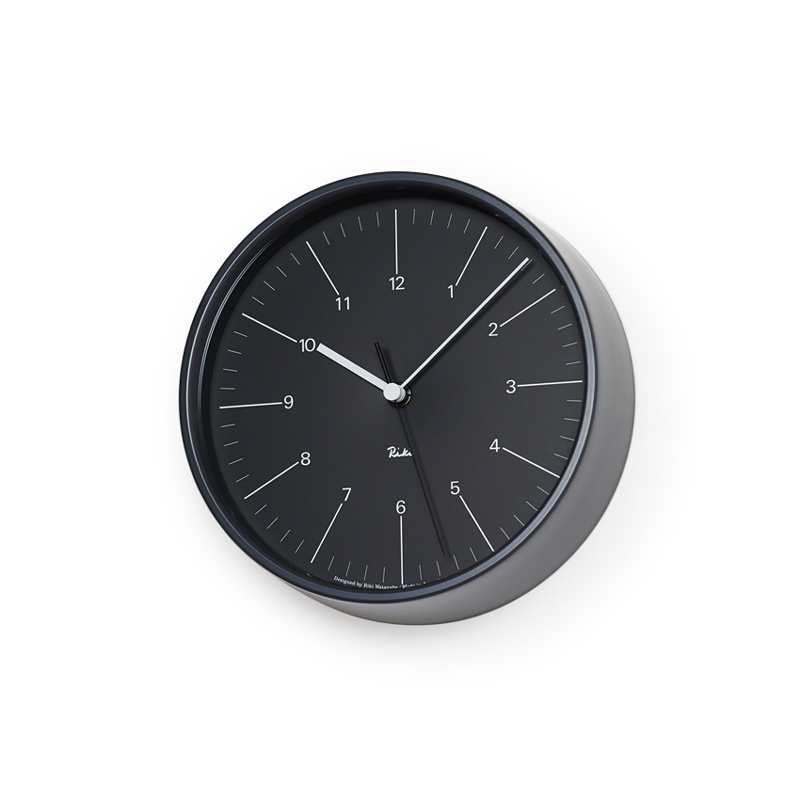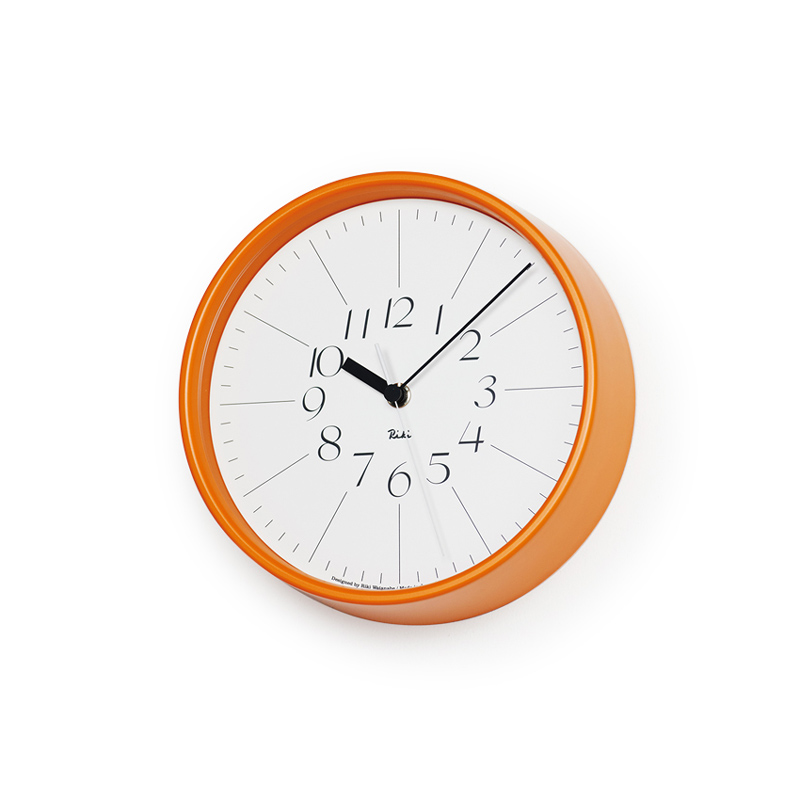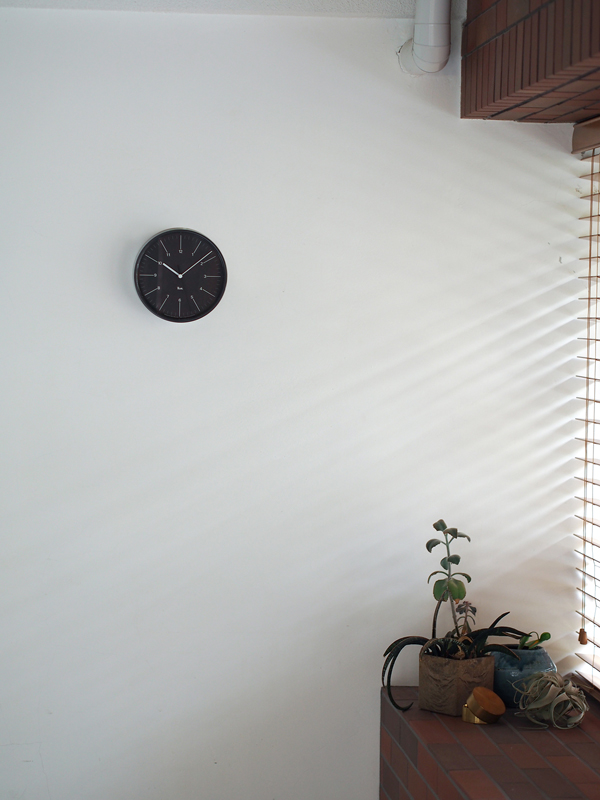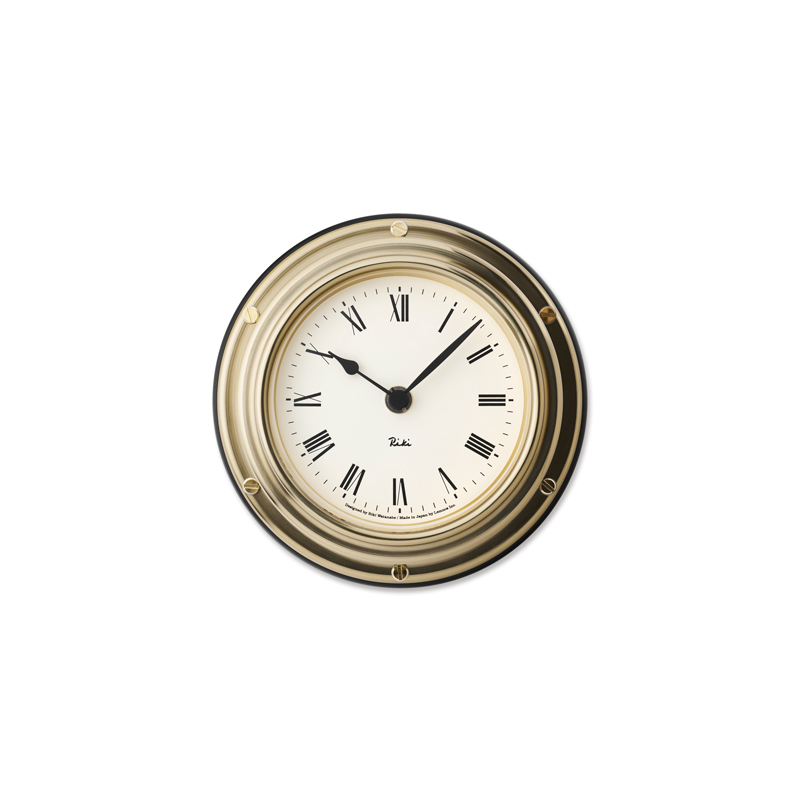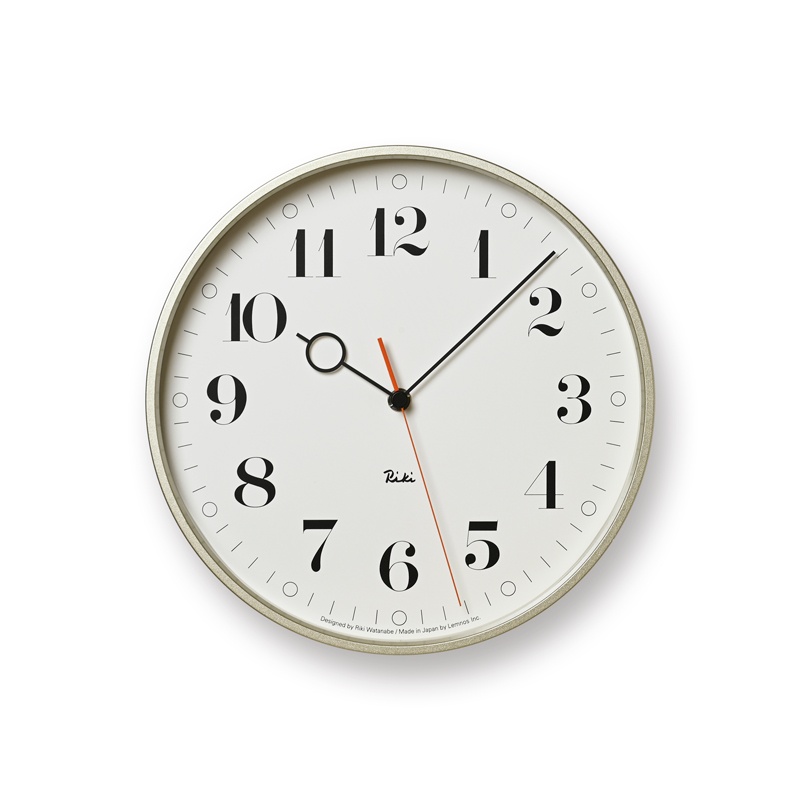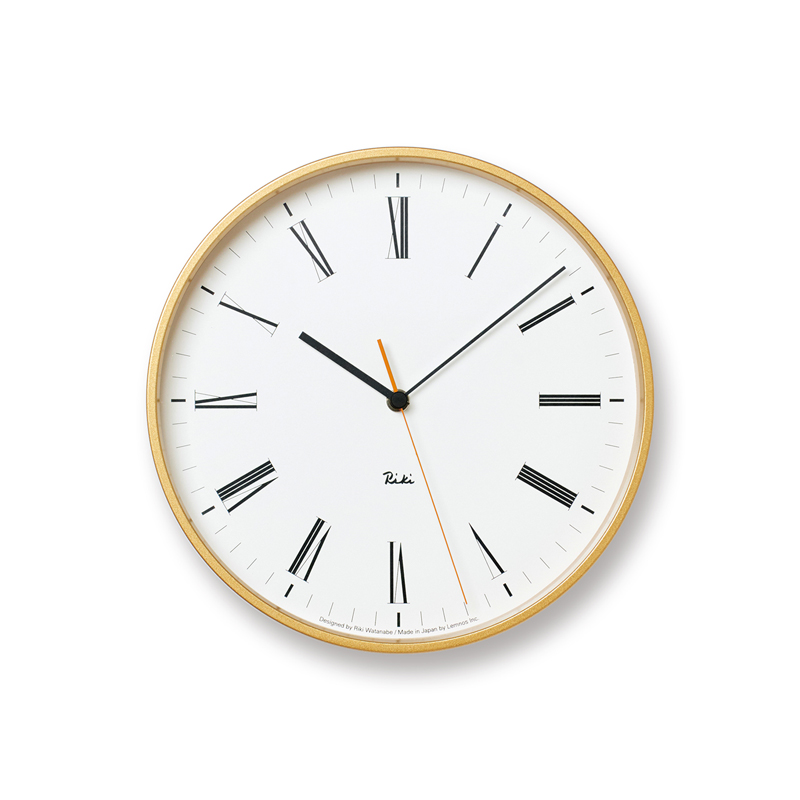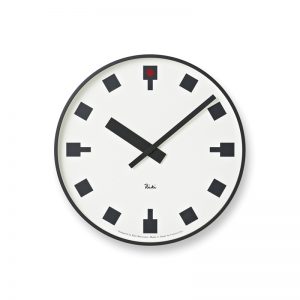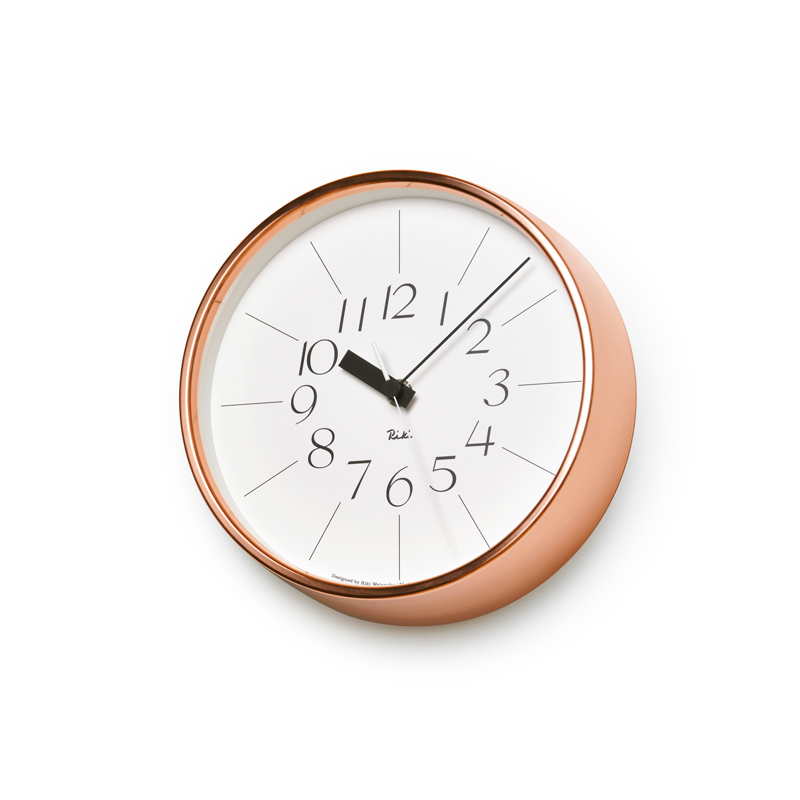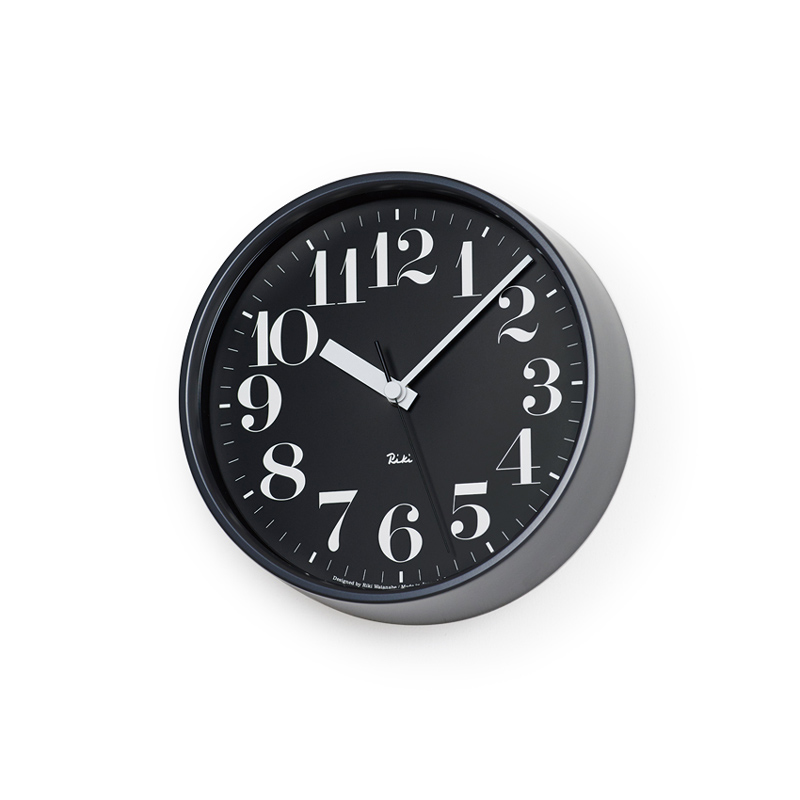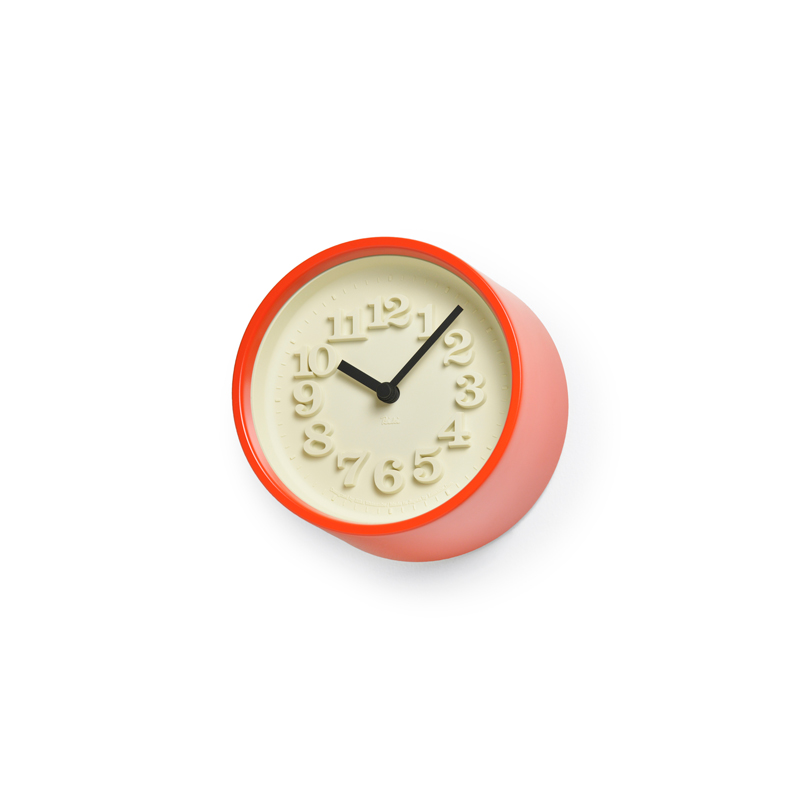RIKI STEEL CLOCK
design : Riki Watanabe
After advocating the concept of a personal clock among the public as a “small wall clock,” our viewpoint further changed to look at its practicality. Quartz clocks are more precise, typically with an error of only a few seconds in a month. What kind of personality is suitable for them? If it is made smaller, the visibility will decrease. So it’s better to scale down the image than to reduce the actual size.
In 1977, those clocks were designed based on a theme of balance between “the power concentrating inside and spreading outside” and created one of the completed versions of the personal clock, which can appear larger or smaller using an ideal combination of lines toward twelve different directions and Arabic numerals. You can experience it by getting close and then stepping slightly back.
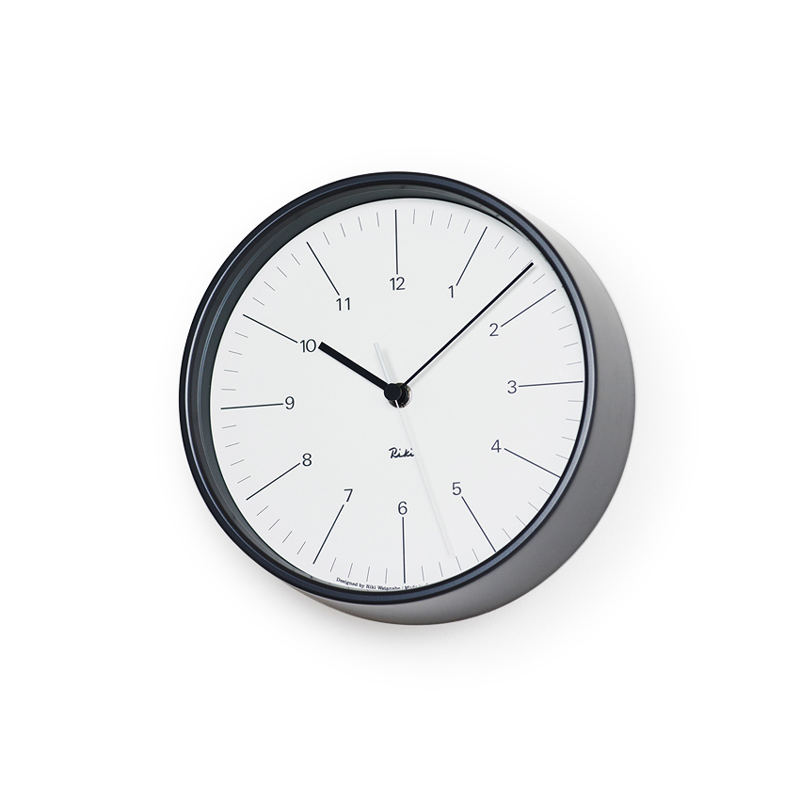
WR17-10 / WR17-11
- Size
- φ204 × d60mm
- Weight
- 610g
- Material
- Steel, ABS resin, glass
- Specification
- Sweep Second
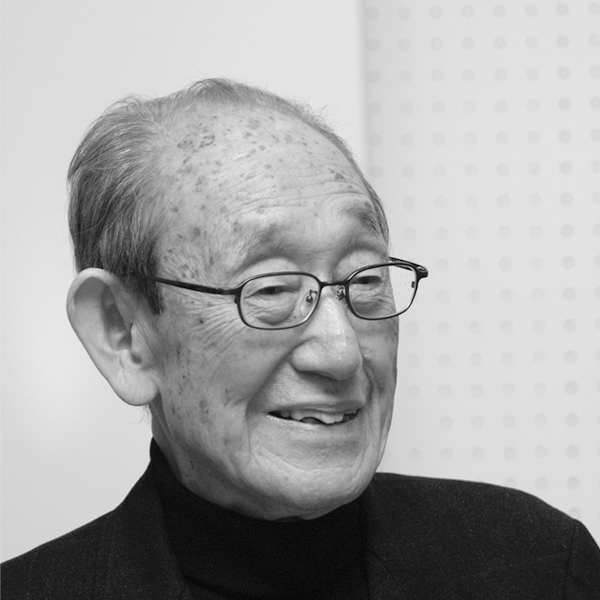
Riki Watanabe
(1911–2013) Graduated from the Woodwork Department of Tokyo High Polytechnic School. After working as an assistant professor at Tokyo High Polytechnic School and as an assistant in the Forestry Department at Tokyo Imperial University (the existing Tokyo University), he established Japan’s first design office, the RIKI WATANABE Design Office, in 1949. His main focus was the establishment of the Interior Architect Department at Tokyo Molding University, Craft Center Japan, Japan Industrial Designer Association and Japan Designers Committee. He designed the interior decor at the Keio Plaza Hotel, Prince Hotel, etc. and furniture such as the “Himo-Isu (Rope chair)” and “Trii-stool”. Moreover, from wall clocks and watches to a public clock called “Hibiya pole clock” at Dai-ichi Life Holdings in Hibiya district, his work on clocks and watches became his lifework. He received the Milano Triennale Gold Medal in 1957, the Mainichi Industrial Design Prize, Shiju hosho(the Medal of Honor with Purple Ribbon), and many other awards/recognitions. In 2006, the “Riki Watanabe – Innovation of Living Design” exhibition was held at the National Museum of Modern Art.

